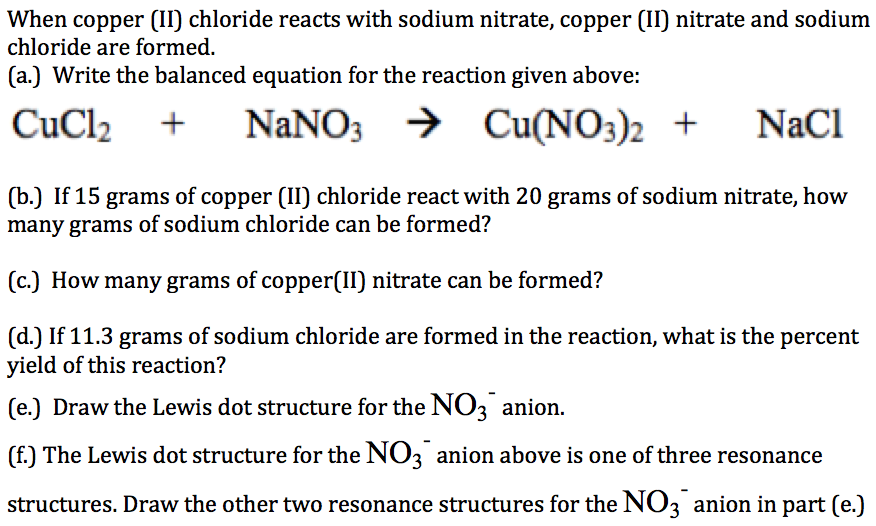

Molarity of AgNO3 = moles of AgNO3 remaining / total volume of solution = 0.554 mmol / (12.0 mL + 21.22 mL) = 0.017 M Moles of AgNO3 remaining = moles of AgNO3 - (3 * moles of CoCl3) = 2.4 mmol - (3 * 1.846 mmol) = 0.554 mmol To find the molarity of the excess reactant after the reaction completes, we first need to find the moles of AgNO3 remaining: Now, we can find the mass of the precipitate: Now, we can find the moles of Co(NO3)3 formed: Since we have more than 3 times the moles of AgNO3, CoCl3 is the limiting reactant. Write a balanced equation, ionic equation, and net ionic equation for: Copper(II) Nitrate + Magnesium. The stoichiometry of the reaction is 3:1, so we need 3 times more moles of AgNO3 than CoCl3. Write a balanced formula equation, complete ionic equation, and net ionic equation for the reaction that occurs between ammonium chloride and silver nitrate. We can do this by comparing the moles of each reactant:

To find the mass of the precipitate, we first need to determine the limiting reactant. The net ionic equation is obtained by canceling out the spectator ions (NO3- and Cl-):ģAg+ (aq) + Co3+ (aq) = Co3+ (aq) + 3Ag+ (aq) Now, we can write the net ionic equation by breaking down the aqueous compounds into their respective ions:ģAg+ (aq) + 3NO3- (aq) + Co3+ (aq) + 3Cl- (aq) = Co3+ (aq) + 3NO3- (aq) + 3Ag+ (aq) + 3Cl- (aq) The balanced molecular equation is already given:ģAgNO3 (aq) + CoCl3 (aq) = Co(NO3)3 (s) + 3AgCl (aq) First, we need to write the balanced molecular equation and then the net ionic equation.


 0 kommentar(er)
0 kommentar(er)
